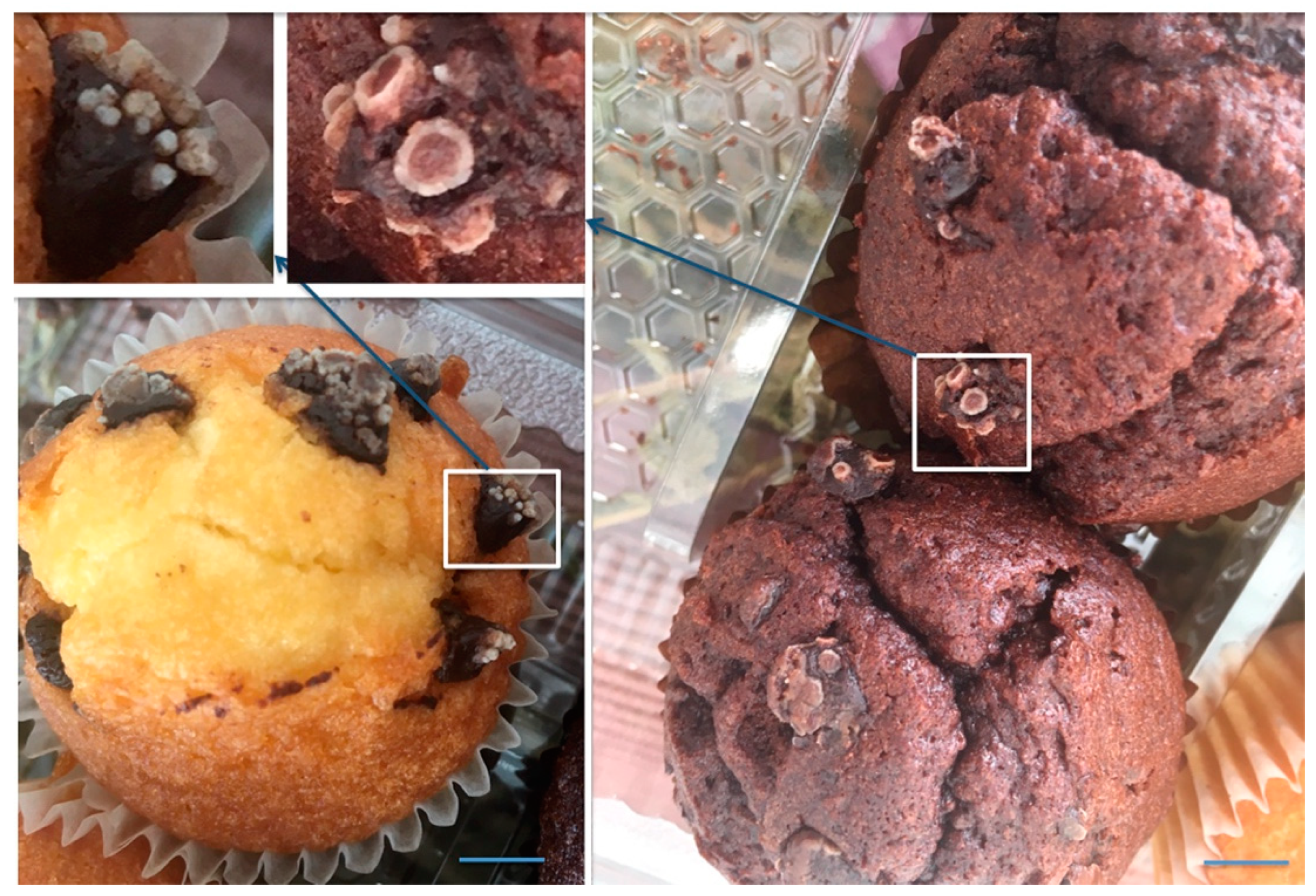aromatic compound as food preservative and addictive
Aroma compounds can be found in food wine spices fragrance oils and essential oils. C 6 H 5 or.

Benzoic Acid An Overview Sciencedirect Topics
N-nitroso compounds heterocyclic aromatic amines polycyclic aromatic hydrocarbons 14-dinitro-2-methyl pyrrole DNMP and ethyl nitrolic acid ENA are among the main compounds of toxicological concern.

. It is metabolized by conversion to C6H5CONHCH2COOH hippuric acid which ultimately is excreted in the urine. The green pigment found in plants more commonly known as chlorophyll consists of aromatic hydrocarbons and is very important in the process of food production in plants. Na-benzoate was the first chemical food preservative approved in the US.
We have created all sorts of plastics that are used in innumerable ways. After the concept of aromaticity. The former are natural chemicals commonly found in the kitchen eg.
Name each compound using both the common name and the IUPAC name. Meta 13 disubstitution. Foodborne disease is a global issue with significant impact on human health.
Similarly an estimated large ranking of EO components may be as follow same. Principal component analysis of the data showed that cold plasma and ozone treatment had different effects on diverse groups of. They are known as aromatic due to their pleasant smell.
For example many form biochemically during ripening of fruits and other crops. Until into the 19th century substances were described as aromatics that were principally obtainable from resins or plants and that gave off a pleasant smell. Structure aromatic ring with COOH.
PH pK log A-HA remember. The nucleic acids and amino acids in the human body also consist of these aromatic hydrocarbons. Cloveoregano cinnamon coriander thyme mint rosemary mustard sagecilantro.
Onions are a source of inulin for a healthy gut and a good source of vitamin C fiber and manganese. However noxious compounds may be formed by interactions among reactants and specific conditions in processed meats. We add preservatives to foods to keep them fresh.
An aromatic compound is any compound that contains a benzene ring or has certain benzene-like properties. A brief description of some of the aromatic compound as food and medicine items has been presented. Aromatic and medicinal plants produce essential oils in the form of secondary metabolites.
Shanxi Zorui Biotechnology Co Ltd. Originally derived from rowan tree berries its now manufactured synthetically for the most part but its use is preferred to nitrates which are known carcinogens. In real life many aromatic compounds have an odor however there are some compounds that are chemically aromatic but do not have a distinct smell.
These essential oils can be used in diverse applications in food perfume and cosmetic industries. However considering meat specific natural preservatives are approved as food additives. A-HA 1.
They all contain food additives or chemicals that can be dangerous for children. Sometimes an aromatic group is found as a substituent bonded to a nonaromatic entity or to another aromatic ring. Para 14 disubstitution or 1-bromo-4-chlorobenzene.
According to this regulation natural preservatives currently approved as food additives in the EU include rosemary tocopherol-rich extracts E 306 γ-tocopherol E 308 δ-tocopherol E 309 carotenes E 160a and annatto bixin and norbixin E 160b. The control juice presented the highest amount of formic acid 836 ppm and tyrosine 696 and 724 ppm. The term aromatic derives from the Latin word aroma meaning fragrance.
Benzenoids one containing benzene ring and non-benzenoids those not. Benzoates sorbates sulfites etc. For example benzene is an aromatic compound.
High concentrations of allyl sulfides in onions do double duty fighting heart disease and cancer. More accurate scientific tests showed many of these substances to be benzene derivatives. A staple in the US onions are an aromatics superstar.
Aromatic hydrocarbon are hydrocarbons containing sigma bonds and delocalized pi electrons between carbon atoms in a ringFor example benzene. In recent years several studies have shown that some of their benefits can be attributed to their antimicrobial antioxidant anti-inflammatory and also immunomodulatory properties. LCMS Analysis of Carnitine and Trimethyl Glycine NH2P-40 2D Food Yellow No4 Tartrazine 2-Phenoxyethanol ODP.
Salt sugar alcohol vinegar etc. Most preservatives that are added to food can be classified into class-I and class-II preservatives. Answers will vary ortho 12 disubstitution.
Additives for Foods and Drugs Aromatic Compounds. Aroma compounds play a significant role in the production of flavorants which are used in the food service industry to flavor improve and increase the appeal of their products. Essential oils EOs are a mixture of natural volatile and aromatic compounds obtained from plants.
Lately the benefit ensuing from these. Regarding the published data concerning EOs use as a food preservative Burt 2004 proposed the following EOs ranking organized from the most antibacterial activity to the less active EO. The group of atoms remaining when a hydrogen atom is removed from an aromatic compound is called an aryl group.
The use of essential oils as antimicrobials and food preservative agents is of concern because of several reported side effects of synthetic oils. Sorbic acid has been used as a food preservative and as an inhibitor of Clostridium Botulinum bacteria in meat products in order to reduce the amount of nitrites which produce carcinogenic nitroamines. Preservatives 2 DE-613 Preservatives 4 DE-413 Preservatives DS-413 Betaine.
Over the last few decades the number of chemicals added to foods and other products has skyrocketed. The most common preservative used is sodium benzoate C6H5COONa. With the growing consumer demand for natural preservatives to replace chemical compounds plant antimicrobial compounds must be thoroughly investigated for their potential to serve as biopreservatives.
Log 1 0. C 6 H 5 or. Not to be confused with the similarly named ascorbic acid sorbic acid is a naturally occurring compound and one of the most common food preservatives out there.
Answers will vary ortho 12 disubstitution. Aromatic compounds are broadly divided into two categories. This review paper will focus on the plant-derived products as antimicrobial.
767 Aromatic compound in different peach cultivars and effect of preservatives on the final aroma of cooked fruits Mojca Bavcon Kralj1 Tjaša Jug1 Erika Komel1 Nikita Fajt1 Kristjan Jarni2 Jelena Živković3 Ibrahim Mujić4 1Chamber for Agriculture and Forestry of Slovenia Agricultural and Forestry Institute Nova Gorica Nova Gorica Slovenia. Like all proton ionophores antimicrobial activity is related to pH because only the undissociated molecule is inhibitory. Diverse aromatic compounds were identified including niacin histidine formic acid 5-HMF phenylalanine and tyrosine.
Para 14 disubstitution or 1-bromo-4-chlorobenzene. While the class-II preservatives are artificial compounds and are usually synthesised eg. Methylbenzene which is an aromatic hydrocarbon is used as a solvent in model glues.
Meta 13 disubstitution. An aromatic compound is any compound that contains a benzene ring or has certain benzene-like properties.

Extending Shelf Life With Natural Preservatives

Food Preservatives From Plants Intechopen

Food Chemicals The Conscious Challenge

Antioxidants Free Full Text Antioxidants Versus Food Antioxidant Additives And Food Preservatives Html

Benzoic Acid An Overview Sciencedirect Topics

Food Preservatives From Plants Intechopen

Food Preservatives From Plants Intechopen


0 Response to "aromatic compound as food preservative and addictive"
Post a Comment